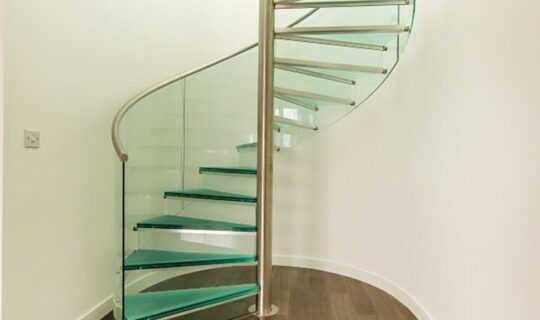Replacing a Spiral Staircase
Many people ask if it is possible to replace a spiral staircase with a new one and what is involved.
Why Replace a Spiral Staircase?
There are several reasons homeowners choose to replace an existing spiral staircase. Many older spiral stairs no longer meet current building regulations and can feel narrow, steep, or unsafe. Others may have been poorly constructed from the start and have since warped, buckled, or deteriorated over time. In many cases, the goal is simply to upgrade to a modern, stylish spiral staircase that enhances the architectural appeal of the property and makes a real design statement.
Key Considerations When Replacing a Spiral Staircase
Before swapping out your existing staircase for a compliant, updated version, there are a few important factors to keep in mind:
1. Required Floor Space
To install a regulation-compliant spiral staircase that serves as the main stair in a dwelling, you’ll generally need a minimum footprint of 1900mm x 1650mm on both the lower and upper floors. This ensures enough space for a safe and comfortable ascent.
2. Rotation and Stair Path
Most residential spiral staircases rotate approximately 270 degrees (three-quarters of a full circle). When planning your replacement, consider where the staircase should begin and end so that the layout flows naturally with your space.
3. Structural Support
Newer or higher-quality spiral staircases may weigh more than older installations. It’s essential to check whether your existing floor structure can support the increased load. If you’re unsure, it’s always best to consult a specialist—experts like us can help you assess and plan safely.
